MORE COVERAGE
The Character of Muslim Rule in India - The Story of Islamic Imperialism in India

Some of the guidelines seem to be good. It is eminently desirable that 'the ancient period of Indian history cannot be referred to as the Hindu period and the medieval period as the Muslim period'. It follows, though it is not mentioned in the guidelines reported by the Indian Express, that the modern period of Indian history also will not be named as the British period. This scheme of periodization, however, was given up by most historians quite some time ago. One only wonders what the votaries of Islamic imperialism will do without a Muslim period of Indian history.
It is also commendable that 'the term Aryan cannot be used as a racial category'. The term has never been used in a racial sense anywhere in the vast compendium of Indian literature. In the whole of the Rigveda the word 'Arya' occurs only 33 times. It is in the Buddhist and Jain canons that it acquires a very wide currency, which is continued in later Sanskrit literature. But in every instance, it stands for whatever is regarded as eminent or noble. The term was used in a racial sense for the first time by Western historians who cooked up the theory of an Aryan invasion of India around 1500 BC. They also popularised, in a racial sense, the term 'Dravidian' which had only a geographical connotation in the Indian tradition.
It is, however, not at all clear if the guidelines have proposed to eschew altogether the theory of an Aryan invasion of India. The only inference which can be drawn from what the guidelines state in the next breath, is that this baseless theory is not to be given up. Otherwise, it does not make sense to lay down that 'historians have been told to stress the interaction between Aryan and non-Aryan cultures'. The division of ancient Indian culture into Aryan and non- Aryan is itself derived from the theory of an Aryan invasion. So long as we continue to talk of Aryan and non-Aryan cultures, the terms 'Aryan' and 'Dravidian' cannot be divested of racial connotations.
But that is about all that can be said in commendation of the scheme sanctioned by the National Integration Council and sponsored by the Ministry of Education. The rest is recommendations for telling lies to our children, or for not telling to them the truth at all.
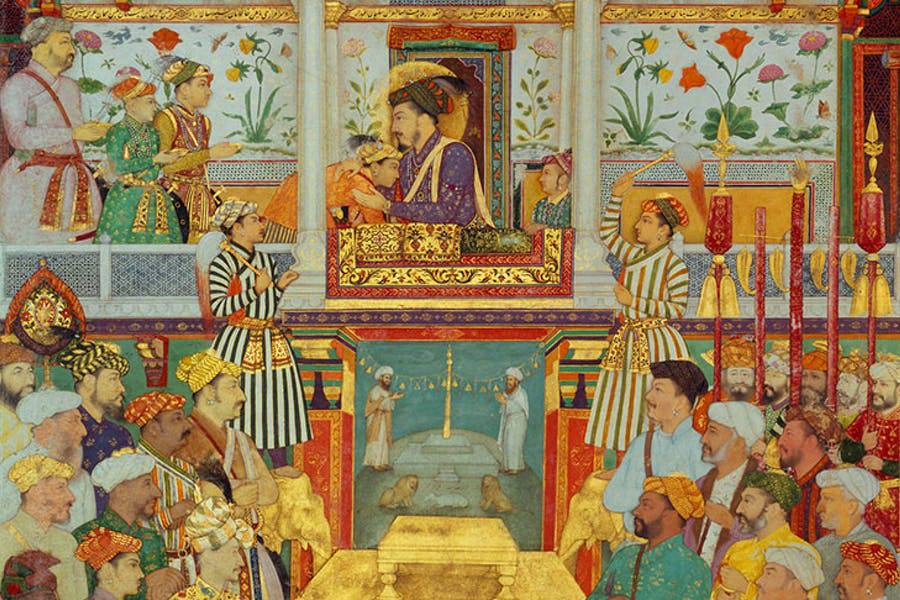 |
Decimation of Hindu Heritage
Take for instance 'the warning against over-reliance on and use of myths as history'. The blow is aimed at the Ramayana and the Mahabharata and the two Hindu heroes par excellence - Sri Rama and Sri Krishna. No serious historian has ever held that the two great epics are history per se. But no serious historian now doubts that the epics contain a core of authentic history. The same holds good for several other myths and legends from the Puranas which all serious historians now search for genuine historical material.
One wonders what harm these noble stories can do to 'national integration'. Hindus have been sustained by these stories for ages past. What has happened now that their children are to be deprived of this spiritual fare? The only explanation is that Islamic imperialism cannot stomach these superb stories. They cast an unfavourable reflection on whatever 'heroes' Islam has had in its blood-soaked history.
But the guidelines do not stop at 'mythology' alone. They invade the realm of recorded history as well. The general recommendation is summed up in a single sentence 'over-glorification of the country's past is forbidden.' The specific instance is also provided immediately 'the Gupta Age can no longer be referred to as the golden period of Hinduism.'
One may very well ask the champions of 'national integration' as to why Hindus shouldn't glorify their ancient past, and take pride in the golden age of the Guptas? The ancient past of India is so great that it simply cannot be over-glorified. And the Gupta Age was in fact the golden age of Hindu history when Hindu spirituality, art, literature, science, and philosophy attained an acme which has not since been surpassed. Every nation has glorified one period or the other of its past history. The Chinese have their Ming period, the Persians their Age of Cyrus the Great, the Greeks their Age of Pericles, the Romans their Age of Augustus, the Arabs their Age of the Abbasids, the English their Age of Elizabeth, the French their Age of Reason and Revolution, the Germans their Age of Bismarck, and so on.
A period of greatness in which a people can take pride, provides a point of self-identification to that people. The soul of a nation is nourished by legitimate pride in a period when its creativity attained a pinnacle. Hindus can be prevented from taking pride in the Gupta Age only for very perverse reasons. The whole prescription for 'national integration', therefore, cannot but become suspect in the eyes of Hindus.
The suspicion grows deeper when the guidelines move from the ancient to the medieval period of Indian history. It is recommended that 'Muslim rulers cannot be identified as foreigners except for early invaders who did not settle here'. We assume that what is meant by 'early invaders' is early Muslim invaders and not the Greeks, the Sakas, the Kushanas, and the Hunas some of whom were rulers but not Muslims. The distinction, therefore, hinges on what is meant by 'here' where the early Muslim invaders did not settle. This is a question of facts and not of interpretation. What are the facts?
The earliest Muslim invaders were the Arabs who succeeded in occupying Sindh in the second decade of the 8th century. But the Arabs did settle down in Sindh although they were constantly threatened by Hindu kings from the interior. They continued to rule over Sindh and even Multan till they were ousted from power by the Turks under Muhammad Ghuri. The very fact that the Sindhi language is still written in the Arabic script testifies to the fact that the Arabs had settled down in Sindh, and have made their presence felt till our own times.
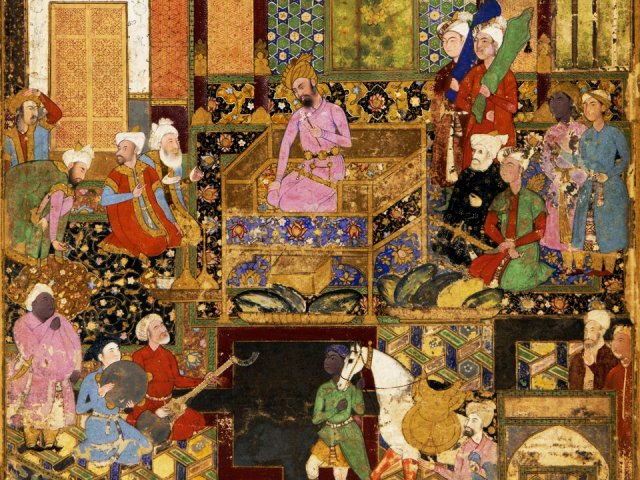 |
The second wave of Muslim invaders was that of the Turks who occupied Ghazni in 963 AD, and conquered from there not only the whole of Afghanistan but also the North-West Frontier Province and a large part of the Punjab under the leadership of Subuktigin and his son, Mahmud Ghaznavi. By the time Mahmud Ghaznavi died in 1030 AD, the Turks had settled in all these areas. Some years later, they had occupied Nagaur in Rajasthan, and settled down there as well. Lahore became the capital of the Later Ghaznavids when they were ousted from Afghanistan by the Ghurids in the last quarter of the 12th century. And they were very much there till they were overthrown by Muhammad Ghuri in 1186 AD.
The third wave of Muslim invaders was led by Muhammad Ghuri who occupied the Chauhan kingdom of Haryana, Ajmer, Aligarh, and Bayana in 1192-93 AD, and the Gahadvad kingdom of UP in 1194-95 AD. His generals had conquered South Bihar, West and North Bengal, and parts of Bundelkhand by the time he was assassinated in 1206 AD. Finally, the Shamsi dynasty was established at Delhi in 1210 AD to be followed by several Muslim dynasties at this centre as well as in several provinces all over India.
Presumably, the point of time which the guidelines have in mind is 1206 or 1210 AD when the Muslim rulers are supposed to have settled down, and become native rulers. The definition of 'here' we thus obtain, therefore, excludes Sindh, Afghanistan, the North-West Frontier Province, and the Punjab beyond the Satluj. But these provinces in which the early Muslim invaders had settled and over which they ruled for long periods, were very much parts of India at the time the Islamic invasions started. The Arabs recognized them as parts of Hind. So did the Turks. The guidelines should have been more honest and stated clearly that what they mean by 'here' is the area which is included in India after the Partition in 1947, and that the present-day Pakistan and Afghanistan are to be treated as foreign lands from the second decade of the 8th century onwards. Students of historical geography may protest. But the guidelines have no use for such long-forgotten facts.
One is left wondering about the place of Babur in this scheme of Indian history. If Mahmud Ghaznavi and Muhammad Ghuri are to be treated as foreign invaders simply because they launched their invasions from Afghanistan, what about Babur who also invaded India from the same place? It is true that he was not an early invader, and that he decided to settle down in India after the Battle of Khanwa in 1528 AD. But the fact remains that he came from a foreign land in terms of the definition laid down by the guidelines. There are many other confusions created by the guidelines. We need not go into them at this stage of our discussion. Suffice it to say that the guidelines are wholly arbitrary in drawing a distinction between 'early invaders who did not settle here', and the 'Muslim rulers' who did.
One may very well ask as to why the establishment of Muslim rule at Delhi should sound so decisive for converting foreigners into natives. In 1210 AD, Delhi was not even a metropolitan city. It was comparatively a small town governed by a satrap of the Chauhans of Ajmer. Kanauj and Varanasi in U.P., Anhilwar Patan in Gujarat, Devagiri in Maharashtra, Dvarasamudra in Karnataka, Madurai in Tamil Nadu, Warrangal in Andhra Pradesh, Jajpur in Orissa, Navadvip in Bengal, Udandapur in Bihar, and Tripuri and Ujjain, and Kalanjar in Madhya Pradesh, were much bigger cities and far more important as metropolitan seats of political power. Why not start converting foreign invaders into native rulers from the dates on which these cities came under Muslim occupation? Delhi started becoming important only after it became the seat of the first sultanate. Why should the future glory of Delhi get projected into the past, and be made to demarcate a decisive date in India's history? And why should Multan, Brahmanabad, Ghazni, Kabul, Peshawar, and Lahore, which were bigger and more important than Delhi at the time of their first Muslim occupation, be deprived of that honour simply because they happen to be situated in areas which are regarded as foreign at present?
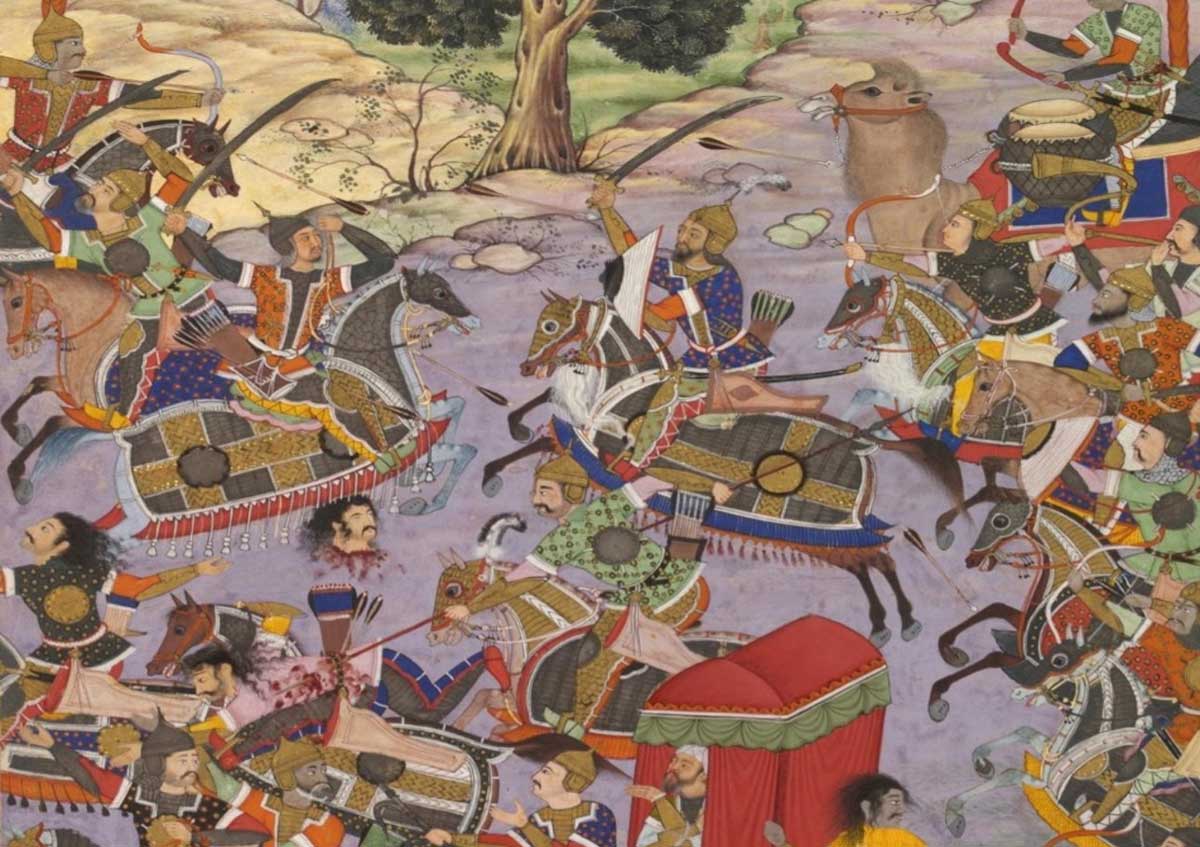 |
Finally, one is left marvelling at the one criterion chosen by the guidelines for converting foreign invaders into natives, imperialists into patriots. One has only to settle down in India in order to become an Indian even if the settler continues to despise everything Indian and admire everything Arabic and Persian and Turkish, even if the settler continues to massacre in cold blood millions of Indians and converting many more by force and fraud, even if the settler continues to capture and sell into slavery and concubinage all over the Islamic world millions of Indian males and females, even if the settler destroys on a large scale the great creations of Indian art and science and literature, and even if the settler reduces the Indians themselves to the status of non-citizens in their own ancestral homeland.
No doubt the guidelines have in view the fact that the British rulers who came later and who are rightly regarded as foreign rulers, had a homeland to which they carried the loot from India and to which they returned in the long run. This looks like a significant fact at first glance. But it loses meaning as soon as we start looking for a homeland in the case of the Turks. We find that long before the Turks invaded India, they had lost their original homeland east of the Jaxartes, and become warrior vagabonds. They invaded Transoxiana, Sinkiang, Khurasan, and northern parts of Iran along the Caspian Sea, massacred some of the local population and intermarried with the rest, and made all these lands into their permanent homelands. Later on, they did the same in what is now known as Turkey. They tried to do the some in India but failed in the face of stiff and continued Hindu resistance. But that is a different story. What is relevant in the present context is that Muslim chroniclers of medieval India give no hint that the Turkish invaders of India ever thought of a homeland to which they could carry the loot or go back. They had come here to create another homeland for themselves.
As regards carrying the loot, what difference does it make as to where it is carried so long as looting the conquered population remains a primary occupation of the conqueror? If Mahmud Ghaznavi and Muhammad Ghuri are to be treated as foreign invaders because they carried the loot from North India to Ghazni, why not extend the logic to the Mamluks, the Khaljis, the Tughlaqs, the Lodis, the Surs, and the Mughals who brought the loot to Delhi from many other parts of India? The same logic should be applied to provincial Muslim dynasties who took the loot to Jaunpur, to Gaur and Pandua, to Dhar and Mandu, to Patan and Ahmedabad, to Daulatabad and Bidar and Gulbarga, and to Ahmadnagar and Bijapur and Golconda. And what about the Arabs in Sindh who lost contact with Arabia after the 8th century, and who retained the loot in Sindh rather than take it to their homeland? They should not be treated as early and foreign invaders if keeping the loot within India is the litmus test.
In any case, who can say that the British invaders did not settle down in India the same way as the Turks had done? Look at the splendid mansions, chapels, churches, hill stations, and big metropolitan cities including New Delhi which the British built for themselves. Look at the giant enterprises, industrial and commercial, they floated for themselves in India. There is no dearth of families in Great Britain even today who take immense pride in their Indian connection. And the British loved India as the brightest jewel in the British crown. The fact that they had a homeland to which they returned when they were forced to leave, does not really make much difference in the context of foreign invasion and rule, except for the NCERT experts who specialise in making molehills of mountains, and vice versa.
It is no use fighting the fact that Muslim rule in India was an earlier prototype of the succeeding British rule. No Muslim ruler worth his salt ever condescended to learn or speak an Indian language, except in the last days when Muslim power had collapsed. The pride of place was always given to Arabic, and Persian, and even Turkish, as to English during the British days. All positions of power and privilege were always reserved for Muslims of Arabic, or Turkish, or Persian, or even Abyssianian descent, as they were for the white men of British, or European descent later on. Every Muslim adventurer coming from Arabia, or Persia, or Khurasan, or Central Asia, or far-off North Africa and Abyssinia, could immediately obtain a position of privilege in the Muslim aristocracy, no matter how uncouth or unlettered he happened to be, as any European adventurer irrespective of his qualifications could join the exclusive Western club during the British regime. The dresses the Muslim rulers donned, the foods and drinks they relished, the pastimes they preferred, the male and female beauties they prized, the mores and manners they observed - in short, their whole life-style had as little of the Indian in it as the life-style of the latter-day British.
In fact, in several respects the British rulers were kinder to India and the Indians as compared to the medieval Muslim rulers. All Muslim rulers converted Hindus by force, demolished Hindu temples, and heaped insult and injury on every Hindu sentiment and institution. All mullahs and sufis poured ridicule and contempt on Hindu religion and culture without any compunction. But a Hindu ran the risk of his life if he so much as whispered a doubt about the exclusive claims of Islam, or the legitimacy of Islamic laws. On the other hand, the British rulers, though they encouraged Christian missionaries, never permitted them to convert Hindus by force. They never desecrated Hindu places of worship, or hurled insults at Hindu religion and culture. Their Hindu subjects could question the exclusive claims of Christianity in the open market place without inviting so much as a frown from most of the British administrators.
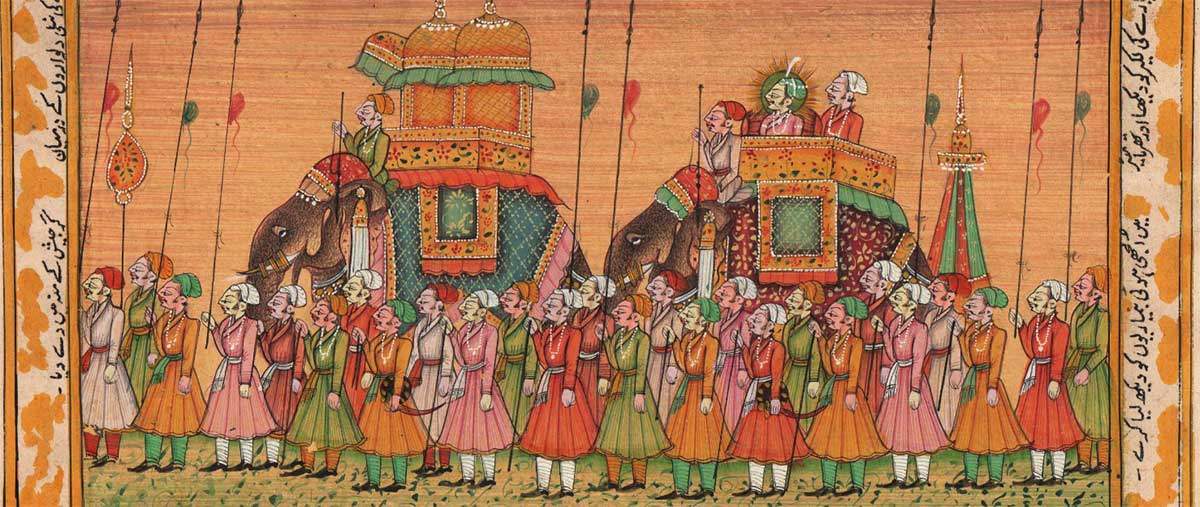 |
Another litmus test is the matter of marriages between the rulers and the ruled. Every Muslim ruler and noble thought it his right to force into his harem as many Hindu women as he fancied. He could keep Hindu concubines without any count. But a Hindu could not even dream of marrying a Muslim girl, not even a girl from a native family converted to Islam. The offence of falling in love with a Muslim woman, even a woman belonging to the family of a Hindu convert, invited capital punishment. This was never true during the British rule. They did not molest Indian women at will. They frowned at but never prevented Indians from marrying British girls.
No, the Muslim rulers of India cannot be regarded as native rulers simply because they settled down here, or because the descendants of a large number of Hindus who were converted to Islam by force now regard themselves as the descendants of those Muslim rulers and demand a gross distortion of Indian history. The Christians in India whose forefathers went over to the religion of the British rulers, may also very well advance the same argument and object to the British being regarded as foreign rulers. It is good of the Christians that so far they have not raised such a demand. But if they do, are we prepared to concede it? Appeasement of a militant millat may be profitable politics. But political convenience cannot dictate the definition of good history.
Heroes and Villains
It is not at all surprising that the corollaries of these controversial guidelines should be equally questionable. We are told that 'Aurangzeb can no longer be referred to as the champion of Islam', and that 'Shivaji cannot be overglorified in Maharashtra textbooks'.
Shivaji first. It is sheer mischief to suggest that Shivaji is glorified in Maharashtra alone. The fortunate fact is that he is honoured by every Hindu worth his name, wherever that Hindu may reside in the length and breadth of India. Rabindranath Tagore, who was not a Maharashtrian, paid his homage to Shivaji in a long poem pulsating with the great poet's image of a Hindu hero. Many more poems and dramas and novels about Shivaji's chivalry and heroism are to be found in all Indian languages. It is, therefore, presumptuous on the part of some very small people to lay down that Shivaji shall not be overglorified. The fact is that he cannot be overglorified, such is the majesty of his character and role. The historian who will do full justice to the personality of Shivaji as well as to his role in Indian history is yet to be born. Some puny politicians pretending to be historians are trying to cut Shivaji to their own size. They are like street urchins spitting at the sun.
As regards Aurangzeb, our secularists may very well find it inconvenient to project his image as a champion of Islam. For that image, in turn, provides an image of Islam as well. And that image of Islam is far from flattering. If that image of Islam is not shielded from public gaze, it becomes difficult for our secularists to project and protect the claims of Islam as religion and culture. Human history, however, abounds in facts which are not at all flattering. These facts cannot be abolished or wished away simply because some people do not like or cannot face them. Aurangzeb is such a fact. Stalin is another. And Hitler yet another. To say that Aurangzeb was not a champion of Islam is tantamount to saying that Stalin was not a Communist and Hitler not a Nazi. And the Islam which was not championed by Aurangzeb, can be found neither in the Quran nor in the Sunnah of the Prophet. It is a figment of the secularist imagination. On the other hand, many histories written by custodians of Islam in medieval and modern times hail him as a great champion of Islam. Many mosques built over and with the debris of deliberately demolished Hindu temples stand in different parts of India as monuments to Aurangzeb's Islamic majesty.
The whole tenor of this tendentious scheme for 'national integration' becomes fully explicit in the following fiat from the Ministry of Education: 'Characterisation of the medieval period as a dark period or as a time of conflict between Hindus and Muslims is forbidden. Historians cannot identify Muslims as rulers and Hindus as subjects. The state cannot be described as a theocracy, without examining the actual influence of religion. No exaggeration of the role of religion in political conflicts is permitted' Nor should there be neglect and omission of trends and processes of assimilation and synthesis.'
There can, of course, be two opinions about whether the medieval period of Indian history, that is, India under Muslim rule, was a dark or dazzling period. It all depends upon how one looks upon it.
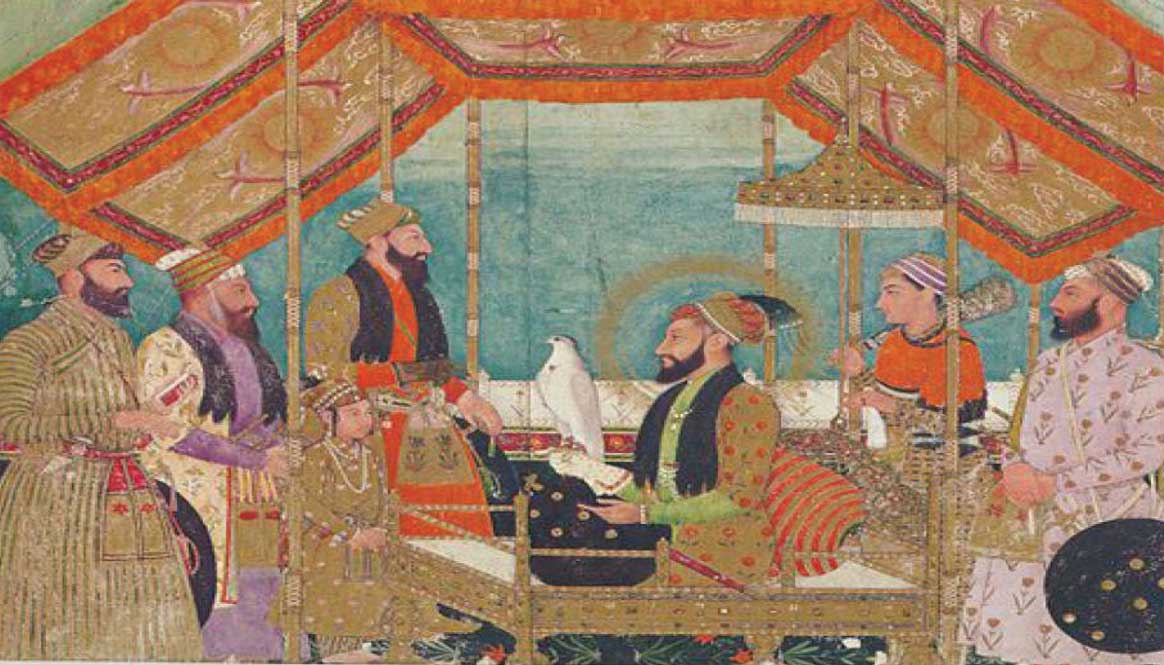 |
Looked at from the point of view of Islam, it was a dazzling period indeed. Islam acquired an empire over a large country full of unrivalled riches. Islam had the immense satisfaction of:
- sending millions of accursed kãfirs to hell in a continuous jihãd,
- demolishing and desecrating thousands of idolatrous places of worship and pilgrimage,
- killing thousands of Brahmins and Bhikshus and forcing the rest to eat beef,
- collecting vast amounts of booty and distributing it among the mu'mins according to rules laid down by the Prophet,
- capturing millions of men and women and children and selling them into slavery and concubinage in the far- flung Islamic world,
- usurping power and privilege over a vast population which was reduced to serfdom, and
- proving the superiority of Islamic scriptures by the power of the sword
The Muslim rulers built for themselves many sumptuous palaces full of pomp and luxury. They also built many mosques and madrasahs, and patronized any number of mullahs for maintaining the millat in spiritual health. They got themselves as well as their selected spouses buried in big maqbaras studded with precious stones and surrounded by well-laid gardens. They built and endowed many khãnqahs and dargahs in which the sufis stayed and sang and danced and sermonised. All these monuments are now described and discussed in detail in many histories of Indo-Muslim architecture, and are photographed by an endless stream of tourists. They do leave an impression that medieval India under Muslim rule was a many-splendoured land.
Add to this architectural wealth many other arts and crafts, costumes and coiffures, calligraphy and illustrated manuscripts, Persian poetry and prose, Arabic commentaries on the Quran and the Hadis, court styles of music and dance, and malfûzãts of sufis and saints of Islam. Collected together in an exhibition of Islamic heritage in India, they do leave an impression that medieval India under Muslim rule was a veritable paradise of peace and prosperity.
But so far as the Hindus are concerned, this period was a prolonged spell of darkness which ended only when the Marathas and the Jats and the Sikhs broke the back of Islamic imperialism in the middle of the 18th century. The situation of the Hindus under Muslim rule is summed up by the author of Tãrîkh-i-Wassãf in the following words:
'The vein of the zeal of religion beat high for the subjection of infidelity and destruction of idols'. The Mohammadan forces began to kill and slaughter, on the right and the left unmercifully, throughout the impure land, for the sake of Islãm, and blood flowed in torrents. They plundered gold and silver to an extent greater than can be conceived, and an immense number of precious stones as well as a great variety of cloths'. They took captive a great number of handsome and elegant maidens and children of both sexes, more than pen can enumerate'. In short, the Mohammadan army brought the country to utter ruin and destroyed the lives of the inhabitants and plundered the cities, and captured their off-springs, so that many temples were deserted and the idols were broken and trodden under foot, the largest of which was Somnãt. The fragments were conveyed to Dehlî and the entrance of the Jãmi' Masjid was paved with them so that people might remember and talk of this brilliant victory'. Praise be to Allah the lord of the worlds.'
Hindus cannot and should not be hoodwinked by a parade of Islamic heritage which prospered in direct proportion to their own degradation, distress, desolation, and death. It is adding insult to injury.
CHAPTERS:
- In The Name of National Integration - The Story of Islamic Imperialism in India
- Plea for a Perspective: The Story of Islamic Imperialism in India
References:
The Story of Islamic Imperialism in India - Sita Ram Goel - Voice of India, New Delhi
 Support Us
Support Us
Satyagraha was born from the heart of our land, with an undying aim to unveil the true essence of Bharat. It seeks to illuminate the hidden tales of our valiant freedom fighters and the rich chronicles that haven't yet sung their complete melody in the mainstream.
While platforms like NDTV and 'The Wire' effortlessly garner funds under the banner of safeguarding democracy, we at Satyagraha walk a different path. Our strength and resonance come from you. In this journey to weave a stronger Bharat, every little contribution amplifies our voice. Let's come together, contribute as you can, and champion the true spirit of our nation.
Please share the article on other platforms
DISCLAIMER: The author is solely responsible for the views expressed in this article. The author carries the responsibility for citing and/or licensing of images utilized within the text. The website also frequently uses non-commercial images for representational purposes only in line with the article. We are not responsible for the authenticity of such images. If some images have a copyright issue, we request the person/entity to contact us at This email address is being protected from spambots. You need JavaScript enabled to view it. and we will take the necessary actions to resolve the issue.
Related Articles
- The Spiritual Centre of Hindu Society - Defence of Hindu Society
- How Chhatrapati Shivaji Maharaj was establishing Hindu Samrajya by concluding centuries of Islamic oppression - Historian GB Mehandale destroys secular propaganda against Hindu Samrajya Divas
- Devkinandan Thakur's statement is a slap in the face of the Islamist hoodlum from Hyderabad - “Many more Yogis and Modis standing in line…”
- Mohammedan needs to 'take back Babri Masjid', ISIS magazine states that Hindus are ‘filthy urine drinkers’ who learned civilized living from Muslims
- Hindu Spirituality Versus Monotheism - Defence of Hindu Society
- Islamic revivalist movements in Bharat and Deoband’s link to Taliban
- ‘Casteless Hindu’ is Not a Paradox. It is The keystone of ‘Ghar Wapsi’ and Hindutva
- Dewan Bahadur saheb was made to quit as a Speaker because he wasn't a Muslim: Tragedy of a Christian leader who backed Pakistan’s creation
- Speech of Sardar Patel at Calcutta Maidan in 1948 busts the myth of ‘Muslims chose India’ and is relevant even today
- ‘Islamic Liberal’ journalist Fatima Bhutto, a British-Pakistani drags Hindus and Modi in her article in The Guardian on Pak blasphemy murder














